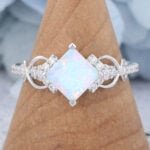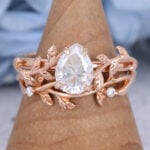Emerald vs Sapphire: Which Gemstone Wins in Color, Strength & Value?
Both emerald and sapphire are gemstones among the three major colored gemstones. These two most popular colored gemstones are often compared because of their similar status and colors. As precious gemstones commonly used in fine jewelry for daily wear, emerald and sapphire have also attracted much attention for their hardness, durability, price and symbolic meaning. This article will analyze Emerald vs Sapphire in depth from multiple dimensions to help you find the gemstone that is truly suitable for you.
Emerald vs Sapphire In History and Origin
Emerald is a gemstone with thousands of years of history. It was first produced near the Red Sea in Egypt. In ancient Egypt, Cleopatra regarded it as a symbol of eternal youth and rebirth. In the Middle Ages, these emerald green stones was popular among European royal families. It was considered to symbolize nobility and have the power to ward off evil and protect the body. Today, emeralds are mainly produced in Colombia, followed by Zambia, Brazil and Afghanistan.
The history of sapphires can be traced back to thousands of years before Christ. As early as the ancient Persian, Greek and Roman periods, people had already begun to use and cherish this gemstone. Sri Lanka has been mining sapphires since around 800 BC, and is considered one of the oldest sapphire production areas in the world. In medieval Europe, sapphires symbolized honesty, loyalty and nobility, and were the preferred gemstones of the royal family and church members. They were often inlaid in scepters, crowns and holy vessels, reflecting their sacred and noble status.
Emerald vs Sapphire In Color and Visual Appeal
Green color gemstone emerald is famous for its rich and deep green color, usually with a slight blue or yellow tint, presenting a natural, calm and vital visual experience. High-quality emerald has high saturation and moderate brightness, as if it contains the breath of the forest, exuding a tranquil and smart beauty. The common natural inclusions inside it are also called “emerald gardens”, which not only do not affect its value, but become one of the important features to identify the genuine products.
Sapphires are famous for their pure and deep blue color like the ocean. Top-quality sapphires often present a velvety royal blue color, which is rich but not dark, clear but not glaring, giving people a noble, rational and calm visual experience. Sapphires from different origins may also have subtle purple or green tones, making them show a richer color level.
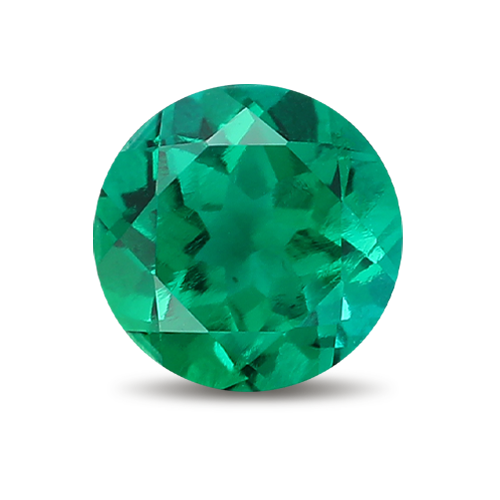

Emerald vs Sapphire In Hardness and Durability
The hardness of emerald is about 7.5 to 8, which makes it relatively hard among gemstones, but it is still considered fragile when compared to sapphires and diamonds. More importantly, emeralds often contain natural inclusions, which, while contributing to their unique natural beauty, can affect their durability. These inclusions make the internal structure of the emerald more fragile, making it prone to cracks or breakage if subjected to external impact. Therefore, when considering emerald durability, extra care should be taken when setting, wearing, and cleaning emerald jewelry. It is essential to avoid violent collisions or high-pressure treatments in order to protect the emerald’s original beauty and integrity.
Sapphire is known for its exceptional durability, ranking 9 on the Mohs hardness scale. Sapphire durability places it just below diamonds, making it one of the hardest natural gemstones available. The sapphire hardness scale rating ensures excellent resistance to scratches and abrasions, which is why sapphire is a popular choice for engagement rings and daily wear jewelry. Its strength not only enhances its longevity but also allows for a wide range of cuts and settings without compromising structural integrity.
Emerald vs Sapphire In Clarity and Inclusions
Aesthetic emerald green gems usually contain more natural inclusions, which are called “emerald gardens” in the gem industry. Instead of being considered a defect, they are often an important sign of authenticity. Due to the presence of these inclusions, emeralds are usually not cut and polished too much to preserve their original beauty and structural stability. Sometimes emerald is also treated with oil to enhance transparency and visual effects to become a clear green gemstone.
In contrast, blue green colored gemstones-sapphire usually has a higher clarity. Although natural sapphires may also contain needle-shaped or silk-shaped inclusions, they are generally clearer than emeralds. This allows sapphires to have a higher degree of freedom when cutting and polishing, and it is also easier to present a bright luster. Some high-quality sapphires can even reach the level of flawlessness to the naked eye, so they are regarded as more durable and visually clear gemstone choices.
Emerald vs Sapphire Price Differences Explained
When comparing sapphire vs emerald price, emeralds usually take the lead in cost per carat, particularly for stones with deep green saturation and excellent clarity. Emeralds are typically more expensive than sapphires, especially when it comes to high-quality stones. The presence of natural inclusions, often referred to as the ‘jardin’, makes each emerald unique but also more delicate. Due to their rarity and the difficulty of cutting and setting them without damage, emeralds often command premium prices. High-quality emeralds can range from $1,000 to over $10,000 per carat, depending on origin, clarity, and color intensity.
Blue sapphires are among the most cherished gemstones in the world, valued for their rich color, exceptional hardness, and timeless elegance. These classic stones typically range in price from $800 to over $5,000 per carat, depending on factors such as clarity, color depth, and origin. While green sapphires are less traditional, they offer a unique alternative with earthy tones and subtle charm. Green sapphire prices tend to be more affordable, making them an appealing choice for those seeking distinctive yet budget-friendly gemstones.
Emerald vs Sapphire In Symbolism and Meaning
Emeralds symbolize vitality, rebirth, and renewal. Their rich green color is linked to nature, peace, and harmony. The emerald stone meaning is often associated with health, prosperity, and love. Ancient civilizations believed emeralds promoted growth and rejuvenated relationships, making them symbols of hope and emotional healing. Even today, emeralds are cherished for their symbolic connection to life and balance.
Blue sapphires represent wisdom, loyalty, and nobility. The blue sapphire meaning is tied to mental clarity, spiritual insight, and truth. Known for their deep blue hue, blue sapphires have been symbols of power and divine favor throughout history. They also stand for emotional security, honesty, and wise decision-making, promoting calmness and peace of mind.
Emerald vs Sapphire in Engagement and Wedding Rings
Emeralds are cherished for their lush, deep tones and symbolic meaning of renewal and growth. A blue green emerald ring offers a vivid alternative to traditional diamonds, making it perfect for unique green gem engagement rings. In the world of sapphire and emerald jewelry, emeralds stand out for their elegance and historical allure.
Sapphires are prized for their durability and rich hues. A dark green sapphire ring brings a dramatic, moody elegance, while a classic sapphire green color appeals to those seeking both rarity and strength. Sapphire and emerald engagement ring designs often pair the two for a dynamic contrast of brilliance and depth.
Choosing Between Emerald and Sapphire
When choosing between a green sapphire engagement ring and an emerald, consider tone, durability, and personal symbolism. While emeralds are softer and more vivid, sapphires offer better wear over time. Both shine in sapphire and emerald jewelry, offering timeless charm with deeply personal meaning.
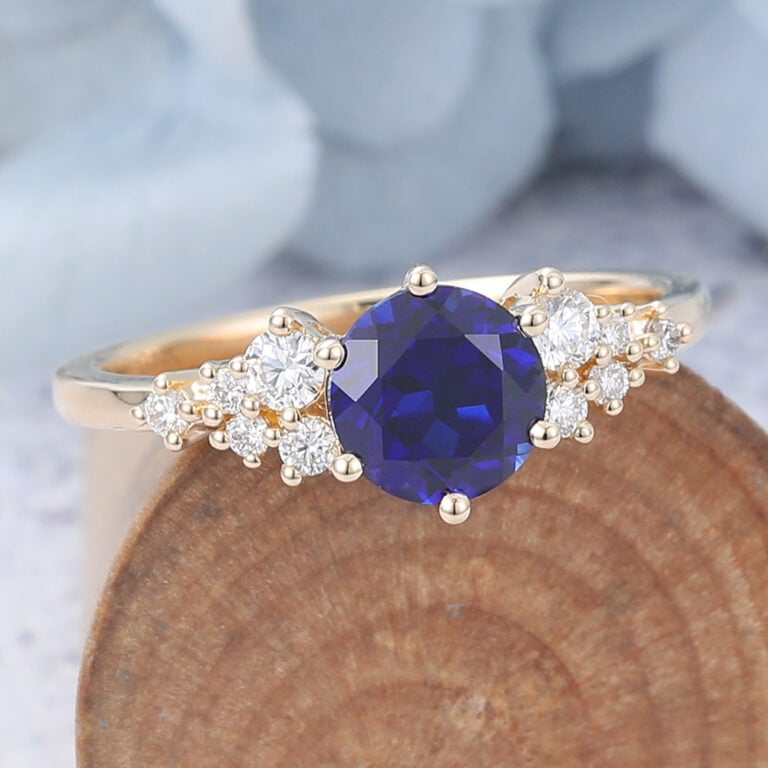
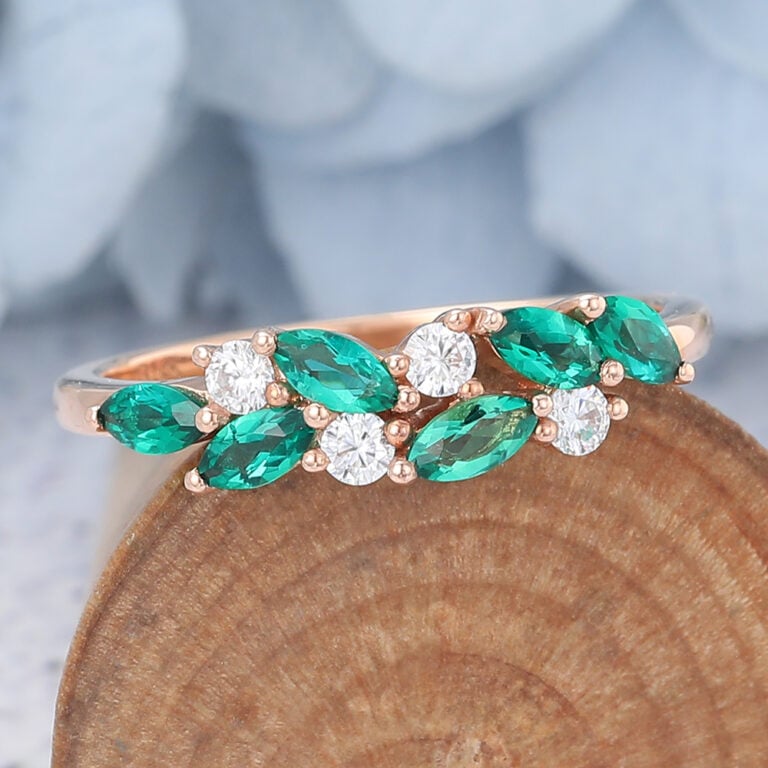
Emerald vs Sapphire: Which Is Better for Investment?
When it comes to investing, both sapphire and emerald jewelry can retain and grow in value, but their appeal differs. High-quality emeralds, especially in a blue green emerald ring, are rarer and often appreciate due to limited supply. Sapphires, including the increasingly sought-after dark green sapphire ring, offer more durability and steady market demand. A green sapphire engagement ring meaning also ties into wisdom and longevity, enhancing its collectible appeal. For investors, both are strong contenders in the world of green gem engagement rings, depending on rarity, clarity, and origin.
Emerald vs Sapphire vs Other Blue and Green Color Gemstones
Green Sapphire vs Emerald
Green sapphires are generally darker and more muted than the vivid, rich tones of emeralds. While emeralds are prized for their intense green and heritage value, green sapphires are more durable and practical for daily wear. The green sapphire cost is often lower than top-quality emeralds, making it an accessible choice for budget-conscious buyers.
Teal vs Green Emerald
Teal gemstones carry a cooler, blue-green tone, offering a modern look compared to the classic, warm richness of green emeralds. Emeralds typically appear more luxurious, while teal stones are trendier and less traditional. In high-end jewelry, emeralds usually hold greater resale value due to rarity.
Peridot vs Emerald
Peridot has a bright, lime-green appearance, often with a golden undertone, contrasting with the deeper, velvety green of emeralds. Though attractive, peridot is generally less valuable and more abundant than emerald. Emeralds are considered a more prestigious gemstone for heirloom pieces.
Green Tourmaline vs Emerald
Green tourmaline varies widely in tone, sometimes mimicking emerald’s appearance but usually with less saturation. It is more affordable and durable, making it ideal for everyday wear. Emerald, however, commands a higher value due to its rarity and traditional status in fine jewelry.
Blue Moissanite vs Sapphire
Blue moissanite exhibits a vivid sparkle and bluish hue but lacks the depth and historical significance of natural sapphire. Sapphire has a richer, more refined appearance and stronger long-term value. Moissanite is a budget-friendly alternative but not typically used in high-end investment pieces.
Conclusion: Choosing Between Emerald and Sapphire
When it comes to Emerald vs Sapphire, the choice depends on personal style and purpose. Emeralds offer vivid green beauty and prestige, while sapphires provide durability and diverse colors. Both are timeless choices in fine jewelry.
FAQs About Emerald vs Sapphire
Are emeralds sapphires? Are green sapphires rare?
No, emeralds and sapphires are different gemstones. Emeralds are beryl, while sapphires are corundum. Natural green sapphire is rarer than blue sapphire and offers a unique, earthy elegance.
Do emeralds come in different colors? Can emeralds be different colors? What does emerald green look like?
Emeralds are primarily green, though they can range from bluish-green to yellowish-green. A green emerald typically appears as a deep, vibrant shade, making it a clear green gem with a rich, luxurious look.
Are sapphires expensive? Are emeralds or sapphires more expensive? Is emerald more expensive than diamond?
Sapphires can be expensive, especially in rare colors and high clarity. Between emeralds and sapphires, emeralds are often pricier due to their rarity and inclusions. When comparing emerald price vs diamond, top-grade diamonds usually cost more, but exceptional emeralds can exceed lower-grade diamonds in price.
How hard are emeralds? What is the hardness of emerald? Are sapphires hard?
Emeralds rank 7.5–8 on the Mohs scale, making them relatively hard but prone to chipping due to internal fractures. Sapphires are harder, rated at 9, second only to diamonds. In terms of sapphire hardness vs diamond, diamonds are still the hardest at 10.
What’s more expensive emerald ruby or sapphire?
While rubies often fetch the highest prices, emerald vs sapphire cost can vary based on quality and size. Emeralds are often more expensive than sapphires, particularly when they are high-quality and have intense green color.


